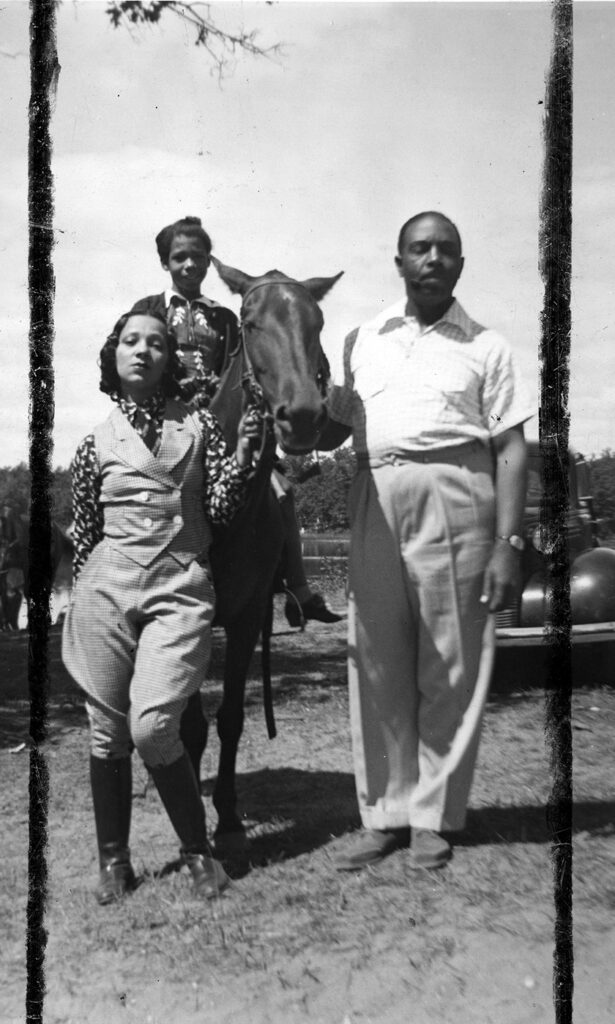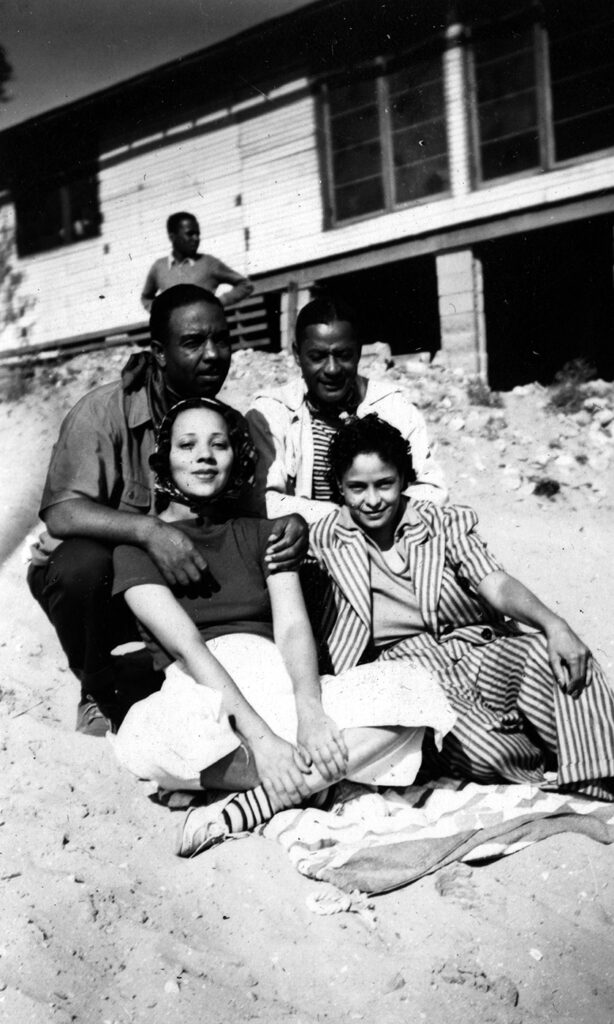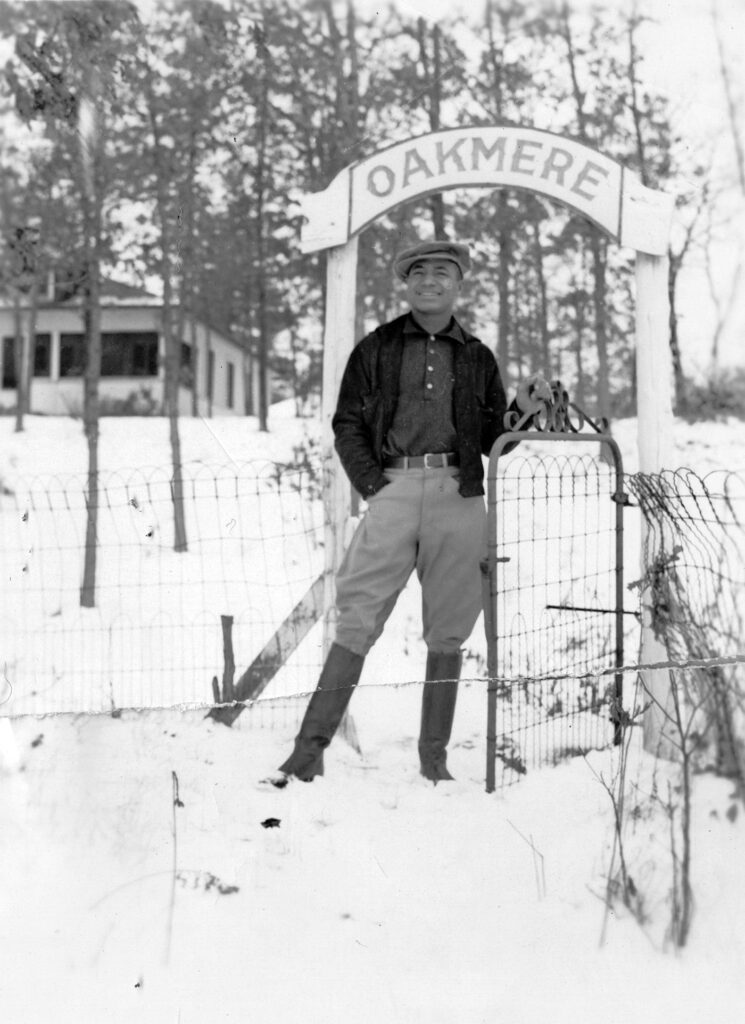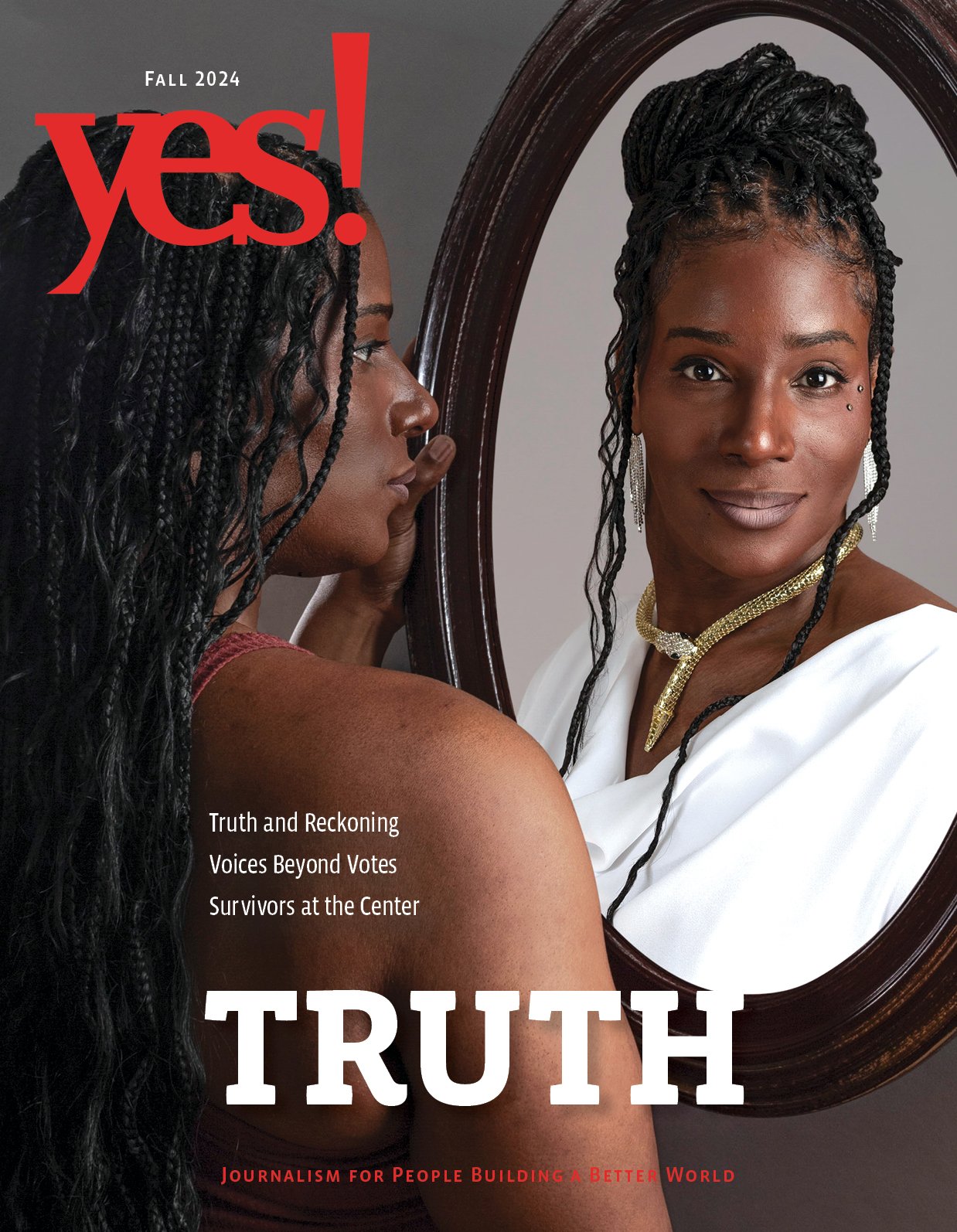Preserving Black Historical Resorts Is a Radical Act

Images from Michigan’s historic Idlewild resort are striking for their depictions of Black people vacationing and having a good time during a period in history where sociopolitical conditions made it nearly impossible.
Families playfully make sandcastles together; young boys dive off wooden piers into the lake; couples sit outside of quaint wooden cabins; beauty pageant contestants strut down a grassy runway; vacationers horseback ride and boat—all seemingly enjoying the respite of tranquil summer recreation, without a care in the world.
Amid the violent segregation of the Jim Crow era, leaning into Black joy, leisure, and recreation was a form of quiet radical resistance. Today that resistance is ongoing through retaining the memory and actual historical sites that held space for it as we continue to reckon with anti-Blackness in the United States.
“It’s like Rosa Parks sitting on that bus. It’s like Colin Kaepernick taking a knee. You know, those folks, what they did, was … equivalent to all that. It’s a part of that struggle,” says Joe McGill, founder and executive director of the Slave Dwelling Project, a nonprofit that reframes the narrative of American slavery and centers the spaces where enslaved Africans lived. “They wanted to be able to recreate, to have places for recreation. It was radical.”
Idlewild, known as Michigan’s “Black Eden,” is just one of many African American leisure spaces that flourished from the early 1900s to the civil rights era—and which now need intentional investment and coordinated action around historical preservation to continue existing.


Black Edens Across the U.S.
White investors established Idlewild in 1912, but Black entrepreneurs and property owners built the 2-square-mile town into a thriving community of businesses, residences, and entertainment venues like the Flamingo Club.
The resort attracted Black professionals, like prominent cardiologist Dr. Daniel Hale Williams, and Black elites like W.E.B. DuBois, Madam C.J. Walker, and Louis and Lucille Armstrong.
Purdue Professor of African-American studies Ronald J. Stephens says Idlewild later became a must-play tour stop for iconic Black entertainers such as the Four Tops and Aretha Franklin, and saw as many as 25,000 visitors in a single weekend.
“They called it ‘the Summer Apollo of Michigan,’” says Stephens, a reference to the iconic Black entertainment venue in New York City. “Aretha Franklin writes about this in her autobiography: any Black artist that was going to make it in Black showbiz and Black entertainment had to go through [Idlewild].”
Similar sites, resorts, and leisure spaces existed around the country.
Oak Bluffs in Martha’s Vineyard has been a center of African American life since the 18th century, according to Lawana Holland-Moore, program officer at the National Trust for Historic Preservation, a privately funded nonprofit organization.
“In the 1930s, it became one of the best-known African American vacation resort spots. And this speaks to … that prestige that came with going to Martha’s Vineyard, owning one of those gingerbread cottages right there. It was somewhere to aspire to be able to vacation,” explains Holland-Moore, who oversees the African American Cultural Heritage Action Fund, a multiyear, $25 million-dollar initiative to identify, elevate, and support African American voices, stories, places, activism, and achievement.
American Beach in Florida, Bruce’s Beach, in Manhattan Beach, California, Lincoln Hills in Colorado, Highland Beach, Maryland, and Woodland Park, near Newaygo, Michigan, also catered to an emerging class of middle- and upper-class African Americans seeking an escape from racialized violence and persistent segregation.
Black beachgoers flocked to sites such as Atlantic Beach and Mosquito Beach in South Carolina and Carr’s Beach in Maryland, and other leisure sites and accommodations that the The Negro Motorist Green Book could safely recommend for Black vacationers and travelers.
Ironically, landmark legislation to reverse segregation and discrimination, the Civil Rights Act of 1964, led to disinterest and divestment in these historic leisure sites.
“When [integration] happened, Black folks started going to places where we were prohibited from prior to that,” says McGill, who is also a history consultant for Magnolia Plantation in Charleston, South Carolina, and former field officer for the National Trust for Historic Preservation. “And when we started going to those places, then we started neglecting our places, our physical places that should have been preserved.”

Preservation Challenges
Historic preservation in the United States has always centered White experiences and perspectives, presenting challenges to effective conservation of Black heritage sites, McGill says.
Demographics within conservation and preservation affect what sites and structures are preserved. White women spearheaded early historical societies, he explains, and subsequent groups would follow in their footsteps prioritizing whitewashed narratives of U.S. history.
Still today, the people most likely to be involved in cultural heritage planning and preservation are overwhelmingly White—and will likely continue to be. In 2019, White people earned 71% of the degrees awarded in historic preservation and conservation.
Just 2% of the more than 95,000 entries in the National Register of Historic Places relate to Black American history.
“Historic preservation, in a general sense, tends to be a pursuit of happiness. … Saving those things that keep us in that comfortable place—those nice, beautiful, architecturally significant places,” says McGill. “And in doing that, we tend to leave out a lot of the history that tells the stories of the native Indigenous population, and the people who were enslaved. Because in our narrative, we want to squash that as much as possible.”
Also, Holland-Moore says, African American heritage sites aren’t often “grand places, mansions, [or] places of wealth.”
Legal loopholes around land ownership present another threat to the preservation of Black land and leisure spaces. They make “heir’s property,” land that passes down through a family or to multiple family members without a will—a likely method of transference within Black families—vulnerable to takeover and development.
Descendants of Willa and Charles Bruce, who opened a Black resort in Manhattan Beach in 1912, have been fighting for decades for the return of their families’ beachfront property—which was appropriated by the city through eminent domain. So far, they’ve gotten an apology and a plaque.


Many Black people like the Bruce’s descendants have been stripped of hundreds of billions of dollars because of lost land, creating and exacerbating racial wealth gaps.
“Their effort to preserve these places is more of a challenge because of the wealth gap that was caused by the disenfranchisement of the Black folks upon freedom,” says McGill. “The freedom was there, but the wealth was not there to put the resources into the places that we should have saved, that could help tell our stories.”
Preservation Actions
For decades, residents and community stakeholders, conservationists and academics—including Stephens, who authored two books on Idlewild (Idlewild: The Rise, Decline, and Rebirth of a Unique African American Resort Town and Idlewild: The Black Eden of Michigan)—have been working to bring back Black leisure spaces into the public consciousness and to preserve these sites for future generations.
“When we’re talking about Black recreation spaces, you know, this is important, because it is yet another facet within our story of who we are as African Americans,” says the Action Fund’s Holland-Moore. “The fact that we can even have [and] are even having recreation, that we are relaxing, that we are able to take our families and hit the road and go on vacation. That unto itself is such a novel chapter in our history: the fact that we can relax.”
The African American Cultural Heritage Action Fund was instrumental in revitalizing A.G. Gaston Motel, a former luxury accommodation for African Americans and civil rights landmark in Birmingham, Alabama.
The group also recently wrote a letter of support to the Maryland Department of Natural Resources to preserve part of a Chesapeake Bay property connected to Carr’s Beach, according to Holland-Moore. Earlier this year, the Maryland Cultural & Conference Center commissioned artist and activist Comacell Brown to create an on-site mural of Carr’s Beach.
In 2019, Mosquito Beach in South Carolina was added to the National Register of Historic Places, the results of individual action and partnerships with the Historic Charleston Foundation, the National Park Service, and other community stakeholders.


Preservation at Idlewild has occurred in fits and starts. A community plan established Idlewild Historic Cultural Center in 1973; the state founded the Idlewild Michigan Transformation Initiative in 2007 and awarded more than $620,000 for renovation soon after. Idlewild hosts an annual music festival and has numerous commemorative signs, but the community still has yet to return to its former glory, with iconic venues still shuttered and a population of just 771.
Reinvestment by wealthy Black entrepreneurs could point the way forward for other resorts.
For example, Denver-born billionaire Robert Smith, the wealthiest Black person in America, is a primary founder of Lincoln Hills Cares, a nonprofit organization that offers culturally responsive outdoor education programs and activities in the tradition of historic Lincoln Hills.
While Lincoln Hills resort once catered to Black middle-class families, today the organization’s mission is to share the site’s history and provide outdoor experiences, such as horseback riding lessons and environmental conservation training, to those who may not have been able to otherwise access them.
Lincoln Hills Cares, which was added to the National Register of Historic Places in 1980, plans to restore Winks Panorama lodge, formerly a destination location for performers like Duke Ellington and Lena Horne and other elite visitors to Denver. Camp Nizhoni, a YMCA camp for Black girls who were excluded from other camps during segregation, was also part of Lincoln Hills’ original iteration.
Continued Radical Resistance
In the context of this past year’s racial reckoning, “all this craziness” with the 1776 Commission and “patriotic education,” says McGill, and our national fixation with Black trauma porn, Black leisure again seems as radical and relevant as it was a century ago.
Black people are continuing to carve out spaces for recreation and wellness through the exploding Black Travel Movement, as well as innovative BIPOC-led self-care projects, such as Ethel’s Club online community and The Nap Ministry.
We may have more options for travel, recreation, and restoration than our ancestors likely ever dreamed of, but it’s still important to safeguard the historic leisure sites of the past.
“What’s already there is embodied energy. That embodied energy is, you know, those people who, before us, you know, created some of these spaces,” says McGill. “We honor them by, you know, making sure that these spaces continue to exist for future generations.”

|
Ruth Terry
is an award-winning freelance journalist based in Istanbul, Turkey, who writes about everything from race to rollerskating.
|

|
Michelle Jackson
is an award-winning personal finance podcaster and freelance writer based in Colorado.
|






